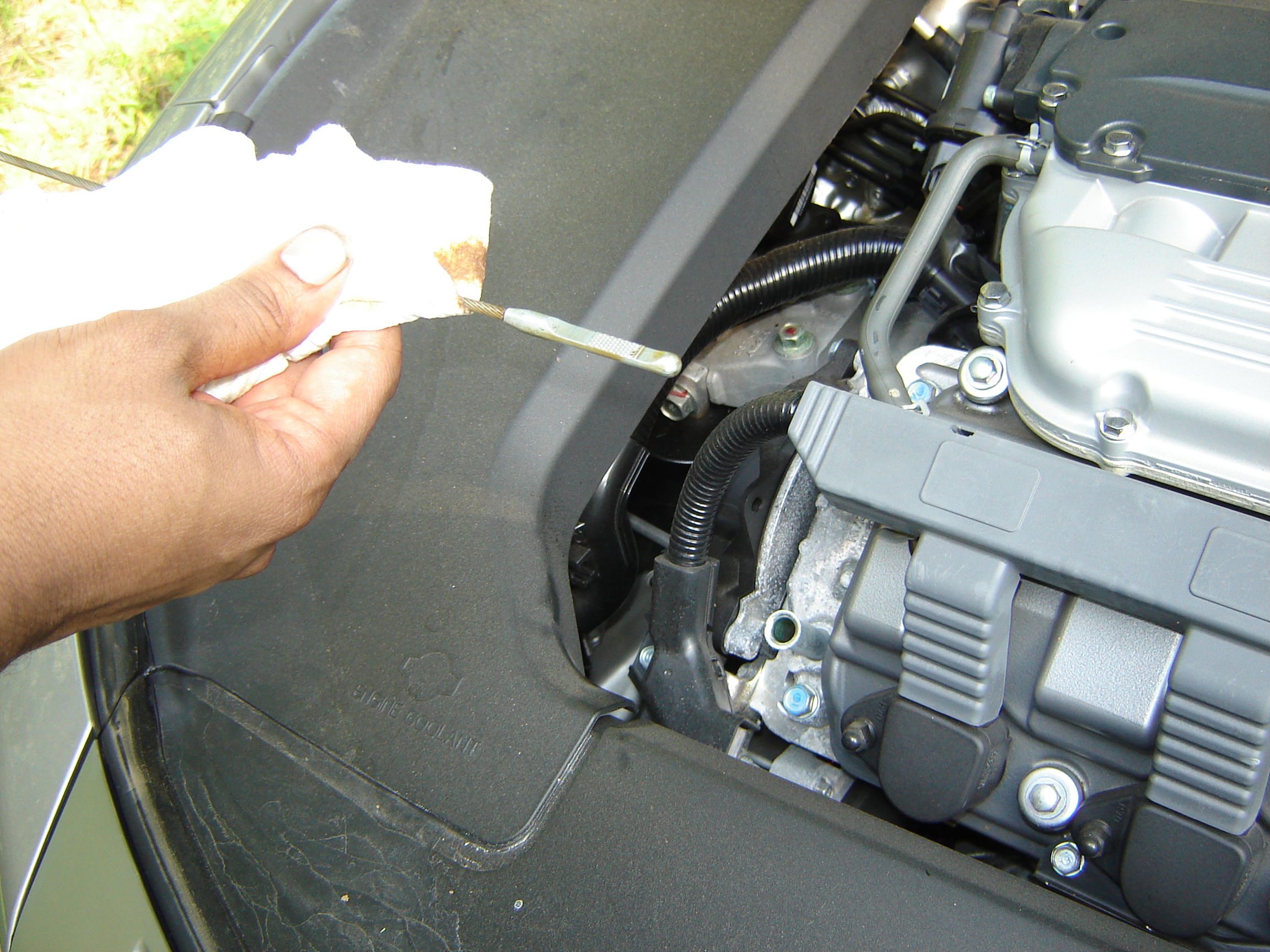How To Check Your Car’s Oil Level
All oil can cause an allergic reaction and used engine oil contains carcinogenic compounds, so avoid skin contact and wash off spills immediately with a specialist hand cleaner. Dispose of used or surplus oil properly so it does not pollute land or waterways. Your local council has oil disposal facilities in at least some of its household refuse sites.
Oil is the blood of the engine. It lubricates and helps cool the engine as it is pumped from the sump at the bottom of the engine, through channels running around it like veins to the moving parts that need lubrication. Running low results in serious and expensive damage.
Some cars have oil level indicators that come on with the ignition, usually with a message like ‘Oil OK’. These only work correctly on level ground and should not be seen as a complete alternative to a visual check.
Dipstick
Your handbook says where the oil dipstick is and whether the oil level should be checked with the engine hot or cold. It may also tell you how long you should let an engine that has been running stand to allow oil to drain back into the sump. It also says what the markers on the stick mean and, usually, how much oil is needed to raise the level from minimum to maximum.
Pull the dipstick out, taking care because long ones can flip drops of oil around as they come out. Wipe it with kitchen towel and put it all the way back in. Remove it again and check where the oil comes to. With new oil it can be difficult to see where it is on the dipstick but older oil is darker so the level can be easily seen. When doing this, also look out for signs of contamination. If the oil has deposits like mayonnaise on the dipstick or around the filler cap on top of the engine, it means water is getting from the cooling system into the oil, probably because a gasket has failed. This needs professional attention quickly or serious damage could result.
Make sure you replace the dipstick and push it fully home (it usually clicks) because when the engine is running the oil is under pressure and may spray out if the dipstick isn’t replaced properly. For the same reason, never remove it when the engine is running.
New cars rarely need more oil between services once they are run in, but old cars may constantly use a little oil and need topping up, especially if a service is nearly due. But if the oil level suddenly starts dropping faster than normal, the engine should be investigated by a mechanic because it is a sign of leaks or engine-wear (the latter is usually accompanied by exhaust smoke).
If you have to add oil, read the handbook for the specification you need. The oil’s viscosity is described with a figure like 10W/40 which signifies its thickness at winter and summer temperatures. In addition, the handbook will say it must comply with minimum standards, usually giving an SAE (Society of Automotive Engineers) number, which is given somewhere on the oil can, and may say if the engine requires a synthetic oil or one specifically for diesels. Diesels are hard on their oil, require different additives to petrol engines and often need synthetic oils to achieve service intervals as long as petrol engines’ intervals.
Oil is put into the engine through a filler located on top of it. Most have an oil symbol on them, like a dripping oil can. Let the engine cool before adding fresh oil and, even then, remember that what drips off the filler cap may be hot. Oil is usually sold in containers with nedks shaped to make filling easy, but if you have problems, use a funnel or the top cut off a plastic bottle. Keep a rag handy to mop up spills or they smoke and smell when the engine gets hot.
Do not overfill the engine because that can do as serious damage as having too little oil. It can even wreck the expensive catalytic converter that cleans exhaust fumes. Even if the handbook says how much oil you need, pause every so often to allow the oil to drain down and check the level with the dipstick, after wiping it off each time.





